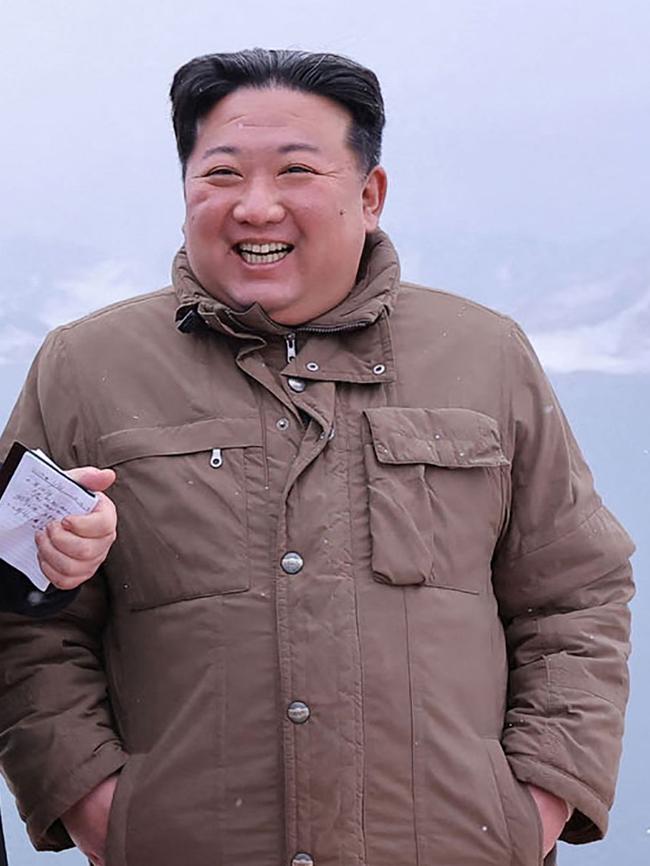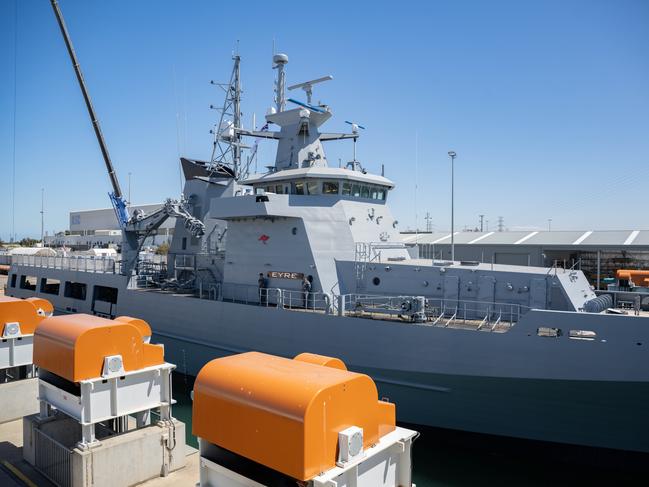Worst places in Australia to be if World War Three hits
For Australia, the question isn’t where to hide in the event of a nuclear war. It’s where not to be — and this is the top of the list.
ANALYSIS
For Australia, the question isn’t where to hide in the event of a nuclear war. It’s where not to be. And how to cope afterwards.
The collapse of the Soviet Union in 1991 lifted a veil of terror from a generation that grew up under the threat of apocalypse.
But the bomb is back.
And international analysts fear there’s a growing will to use them.

The egos behind the buttons
President Vladimir Putin’s propagandists threaten to use nuclear weapons against Ukraine – and the West – on an almost weekly basis.
Chairman Xi Jinping, while personally publicly disavowing nuclear destruction, allows his Communist Party mouthpieces to constantly remind everyone of the ace he holds up his sleeve. Especially when it comes to his territorial designs over India, Bhutan, Japan, Taiwan, the Philippines, Malaysia and Vietnam.
Chairman Kim Jong-un is vowing to use his newly acquired intercontinental ballistic missiles to carry nuclear warheads to South Korea, Japan, Guam – and the mainland United States.
Then there’s Israel. It secretly began amassing an arsenal of more than 100 warheads in the mid-1960s without sanction. Now, one of its chief rivals, Iran, is on the brink of securing its first.


And feuding neighbours India and Pakistan are staring down the barrel of nuclear-tipped ballistic missiles at each other over the disputed region of Kashmir.
The Bulletin of the Atomic Scientists chose to keep their “Doomsday Clock” at 90 seconds to midnight late last month – the closest it has ever been to an apocalypse.
They cited the danger of the Russia-Ukraine war, the slaughter in Gaza, and the worldwide diplomatic, economic and environmental toll associated with 2023 being the hottest year in recorded history.
All it takes is one “incident”. Then the domino effect of “Mutually Assured Destruction” kicks into play.
Those with the largest arsenals – China, Russia and the United States – are still likely to hit strategic targets. At least in the first wave of a nuclear exchange.
Bombing cities has little immediate effect on a major war. That means focusing on strategic military bases, harbours, airfields and sensor stations.
But smaller states, such as North Korea, Iran and Israel, may be more likely to target population centres. Their technology may not allow precision targeting. But it may also be because their ideologies demand drama.
Australia in the firing line
Australia and New Zealand are widely regarded as the best places to survive a nuclear apocalypse.
They’re strategically insignificant.
They’re isolated.
They’re behind a natural “weather wall” created by the equator, which is expected to slow the rate at which nuclear fallout will filter down from the north. And they produce far more basic foodstuffs than they need – giving them a buffer against an inevitable global famine.
But debate rages over how many strategic – and tantrum – nuclear targets Australia holds.
“Once we enter the slippery slope of even limited nuclear exchanges, the end result will be escalation to mutual annihilation — something about which both Vladimir Putin and Xi Jinping may need reminding,” says ANU emeritus strategic studies professor Paul Dibb.
PINE GAP has long been known to top the list. This highly secret US military installation exists to detect and track nuclear missiles. Removing it early in any war would degrade the ability of the US to defend its own soil.
“In the late 1970s, it was made quite clear to me during talks in Moscow that Pine Gap was a priority Soviet nuclear target,” Professor Dibb said in a recent ASPI critique.
“And in 2016, I was warned: ‘In the event of nuclear war between Russia and America, you Australians will find that nuclear missiles fly in every direction.’”
HAROLD E HOLT Naval Communications Station at Northwest Cape, near Exmouth, Western Australia, is in a similar category. This enormous communications facility has been built to communicate with submarines at depths of up to 30 metres. Eliminating it would sow confusion among US attack and ballistic missile submarine commanders.
From here, the list gets more controversial.
RAAF TINDAL near Katherine in the Northern Territory has recently been adapted to host nuclear-capable US B-52 bombers. Any nuclear-capable delivery system is a likely nuclear target.
“But the distance from Tindal to military targets in the south of mainland China is over 4,500 kilometres, and the B-52’s operational speed is subsonic (900 kilometres per hour). This means that it would take in the order of five hours to reach key military targets in China’s south,” Professor Dibb counters.
HMAS STIRLING, the naval base in Perth’s southern suburbs, is slated to become a regular pitstop call for US and UK nuclear-powered submarines. Eventually, it is hoped to also house Australia’s own. But such submarines are incredibly high-value targets because they combine immense firepower, globe-circling range and virtual invisibility.

OSBORNE NAVAL SHIPYARD in Port Adelaide could potentially join its US and UK cousins on a nuclear warhead list. The nuclear-powered submarines it is expected to begin assembling are among the most lethal ships in the sea. But also the hardest to build, maintain and repair.
“Armed with nuclear submarines, Australia itself will be a target for possible nuclear attacks in the future,” Communist Party mouthpiece Victor Gao threatened shortly after then Prime Minister Malcolm Turnbull dropped the AUKUS nuclear submarine pact bombshell in 2021.
“Do you really want to be a target in a possible nuclear war, or do you want to be free from nuclear menace,” he menaced.
MARINE ROTATIONAL FORCE – DARWIN is a rotating force of 2500 US Marine troops, aircrew and sailors based in and around Darwin and at RAAF Base Darwin. While small, it does represent the core upon which a much larger force can be built. And it’s a high-profile US presence far from home shores.

RAAF BASE WILLIAMTOWN, 40km north of Newcastle, NSW, is home base to Australia’s small fleet of F-35 Lightning II stealth fighters. But the one thing these aircraft were explicitly designed to do - be invisible to radar - makes attacking their undefended airfields an obvious shortcut.
GARDEN ISLAND NAVAL BASE, Sydney, is already home to a disproportionately large number of Australia’s otherwise limited number of major surface (and subsurface) combat vessels. And while there are no plans for US or UK nuclear attack submarines to visit, Australia’s own will likely operate from this centralised hub.
Jamie Seidel is a freelance writer | @JamieSeidel
Originally published as Worst places in Australia to be if World War Three hits





